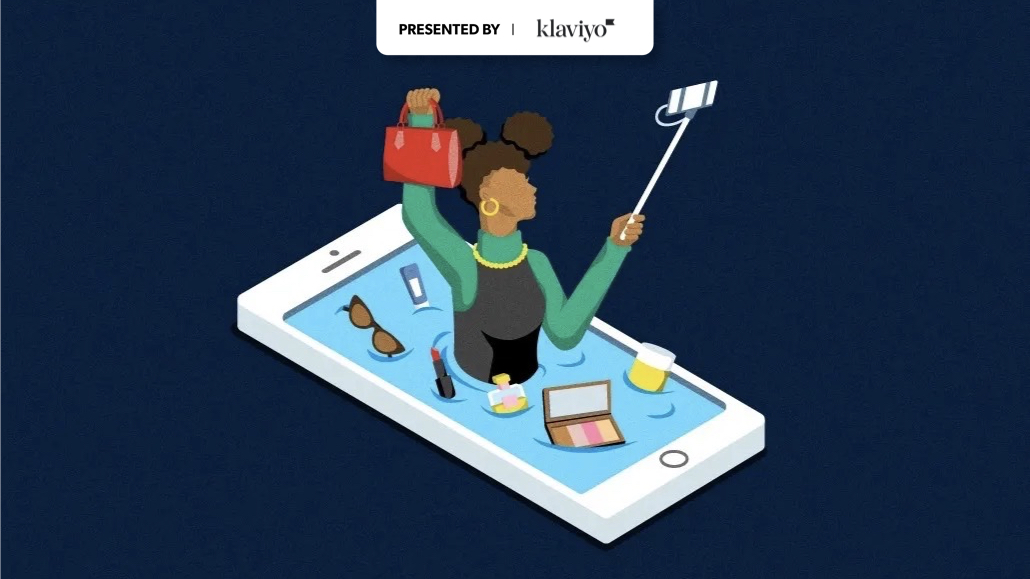Brands are mulling the UGC versus influencers conundrum

This story is part of Glossy and Modern Retail’s series breaking down the big conversations at eTail West.
Shaina Rainford founded Bask & Lather, a hair product company, after creating a rosemary and vitamin-full oil that helped her and her sister recover from hair loss. Yet, she still does only one brand shoot a year and instead relies mostly on images and videos shared by its customers on social.
One customer with glittery yellow fingernails shows how her scalp has filled in. Another video that’s seen nearly 100,000 views demonstrates applying the oil between knotless braids. Some videos are shot in hair salons, others in bathrooms or kitchens.
“We share everything,” Rainford said. “I know a lot of brands spend hundreds and thousands of dollars on creative. But we don’t spend much at all, our customers every single day are creating videos with our product.”
Multiple brands at the industry event eTail West spoke about their marketing and content strategies. And many reported increased interest in producing more user-generated content than typical paid influencer content. The topic was also a major programming focus, with multiple panels looking at how to get customers to share brand stories. Brands like Billion Dollar Beauty spoke alongside Bask & Lather on how UCG can rack up millions of views on TikTok, while hair color company Overtone’s CEO Barbara Roll Cardiel talked about how their UGC is used to amplify other social commerce efforts.
This focus on content from customers instead of paid celebrities or influencers is a broader industrywide phenomenon. About 86% of brands, according to a recent survey from Bazaarvoice, believe UGC can improve performance better than paid or owned media.
Bask & Lather’s Rainford said that she also operates an affiliate program for people who get free products in exchange for posting honest reviews and feedback. Those, in turn, get amplified for being in the TikTok creator network. But the UGC flexes a different muscle, with people sending in videos or images via direct messages.
Still, it’s not as simple as just resharing the content. TikTok and Instagram have rules about what you can and can’t post, and so does Instagram, Rainford said — like how you have to show the product in the branded content. She said credits her 15-year-old son Jayden with figuring out the strategy and walking her through the procedures. As far as the content itself, Rainford isn’t looking for a certain aesthetic — rather, she wants to show her users in their real lives.
“We’re constantly reaching new audiences,” because of the wide array of people who are using and sharing the product, she said.
Billy Cladek, senior vice president of revenue at video commerce firm Firework, said authenticity is the number one thing that brands are looking to highlight in their UGC. That might look like someone showing the product in use and giving their honest feedback, or someone trying on multiple outfits after a haul. “A lot of millennial consumers that we engage with don’t trust highly touched up, highly produced videos,” Cladek said. “They’re looking through the lens of authenticity.”
But UGC doesn’t work for every brand. Andrei Reborn, CTO and co-founder at perfume subscription service Scentbird, said the company doesn’t use any UGC in its marketing. Rather, it has an agreement that it uses with paid influencers that lets the brand use the content in other spots. This allows for better brand control, he said.
“It’s not for every brand,” he said of UGC. “Especially if you are trying to maintain a certain image and certain communication style.”
Whether paid or UGC, Kevin Ertellm, former VP of global retail operations at Nike who attended eTail this year, said the next generation of shoppers is looking for authentic content regardless of format.
“The younger generation, the bullshit detector is high,” he said. “It’s a savvy group that knows how to dig into things, and find out if you’re for real or not.”
There are pitfalls, however, with the onslaught of unvarnished seemingly user-generated content. David Spector, co-founder at Third Love who spoke at eTail on Wednesday, said influencers and content creators have become synonymous — and that’s not necessarily a good thing. There are legal requirements for influencers who are posting sponsored content, but UGC doesn’t fall under that category. “Do you really know, as a user, when something is a paid influencer or a free product giveaway, versus UGC? I don’t think so, and those two worlds have come together in a negative way for consumers. You should know [if something is an ad].”
Stacey Haddroff, performance marketing senior manager for Ayurvedic health supply company Banyan Botanicals, has seen video content become the number one traffic driver on the brand’s social channels in just a few months. The company, however, has typically focused on creating its own content, like how-tos and recommendations.
One of the main topics Haddroff hoped her team could learn about while attending eTail in Palm Springs this week was how to spur user-generated content.
“This is working with people who have a unique perspective and let’s just run with it and see what they think,” she said.

